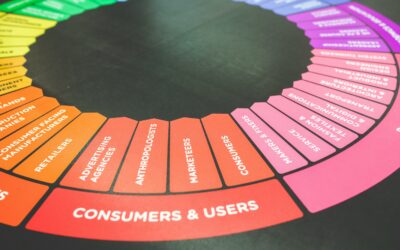Geofencing: A Simple Guide to Location-Based Marketing
Geofencing can be used to effectively target your audience while they’re browsing your online or offline store, doing business with a competitor, and even when they’re preparing to use your product/service.
But what exactly is geofencing marketing?
It’s high time we take a close look at geofencing. After all, the technology has enabled marketers and businesses to reach customers at the best times and at the right locations.
This guide will discuss what geofencing is and how marketers can best use the technology as they step into a new year.
What Is Geofencing?
Geofencing is a location-based marketing technique that utilizes geolocation data to target an audience within a particular geographic area. It delivers content based on where users currently are or the locations they’ve visited previously.
The fact that countless people are increasingly spending their time on smartphones presents marketers with another powerful source of engagement. When a smartphone device enters a point of interest, the geofence will trigger numerous different events. These triggers are typically the delivery of some form of advertising. Traditionally, it was done via SMS marketing; however, it has also encompassed push notifications over time.
Undeniably, geofencing tech available today presents countless opportunities for marketers seeking to boost their ROI. Here are some locations you can target via geofencing marketing:
- Competitor locations
- Your location
- Trade shows
- Events
- Colleges
- Street and stores
- Households via addressable geofencing
You can indeed target more locations than these options. However, this list can help you uncover places and ideas for your brand to target.
How Does Geofencing Marketing Work?
While geofencing may appear complicated on the surface, it is rather simple – especially if you have an experienced geofencing marketing company on your side. Here’s a short summary of how geofencing essentially works:
Step #1: Establish geofence in a designated area
Step #2: Create a particular ad campaign for the designated geofence
Step #3: Allow users to step into the established geofence and get added to your advertising audience
Step #4: Once the user is added, start delivering ads to that user either via in-app ads, push notifications, or display ads
Geofencing detects any user presence within the established fence and works to attract an audience in a particular area. For example, when a user is at least fifty meters away from the area, they might start receiving mobile notifications.
Why Do Businesses Need Geofencing?
Geofencing is a highly effective way to reach and connect with target audiences on a larger scale through smartphone devices. According to a study, location-aware notifications are ten times more successful than general push notifications. In addition, geofencing integrates behavioral data and location intelligence to improve audience segmentation as well as the delivery of relevant notifications. Geofencing marketing has proven to be effective, especially because it’s highly targeted, personalized, and reaches the audience in a timely fashion.
Here are some other reasons for using this location-based marketing:
- Drive audience to your locations by establishing geofences in points of interest
- Intercept and capture an audience at competitors’ locations
- Survey the audience when they leave your points of interest
- Retarget consumers who’ve visited a particular location or engaged with your ad campaign in past
Whether you intend to provide customers with more engaging experiences in your outlet, or simply want to draw attention away from your competitors, geofencing marketing can make it all happen. Ask us how!



